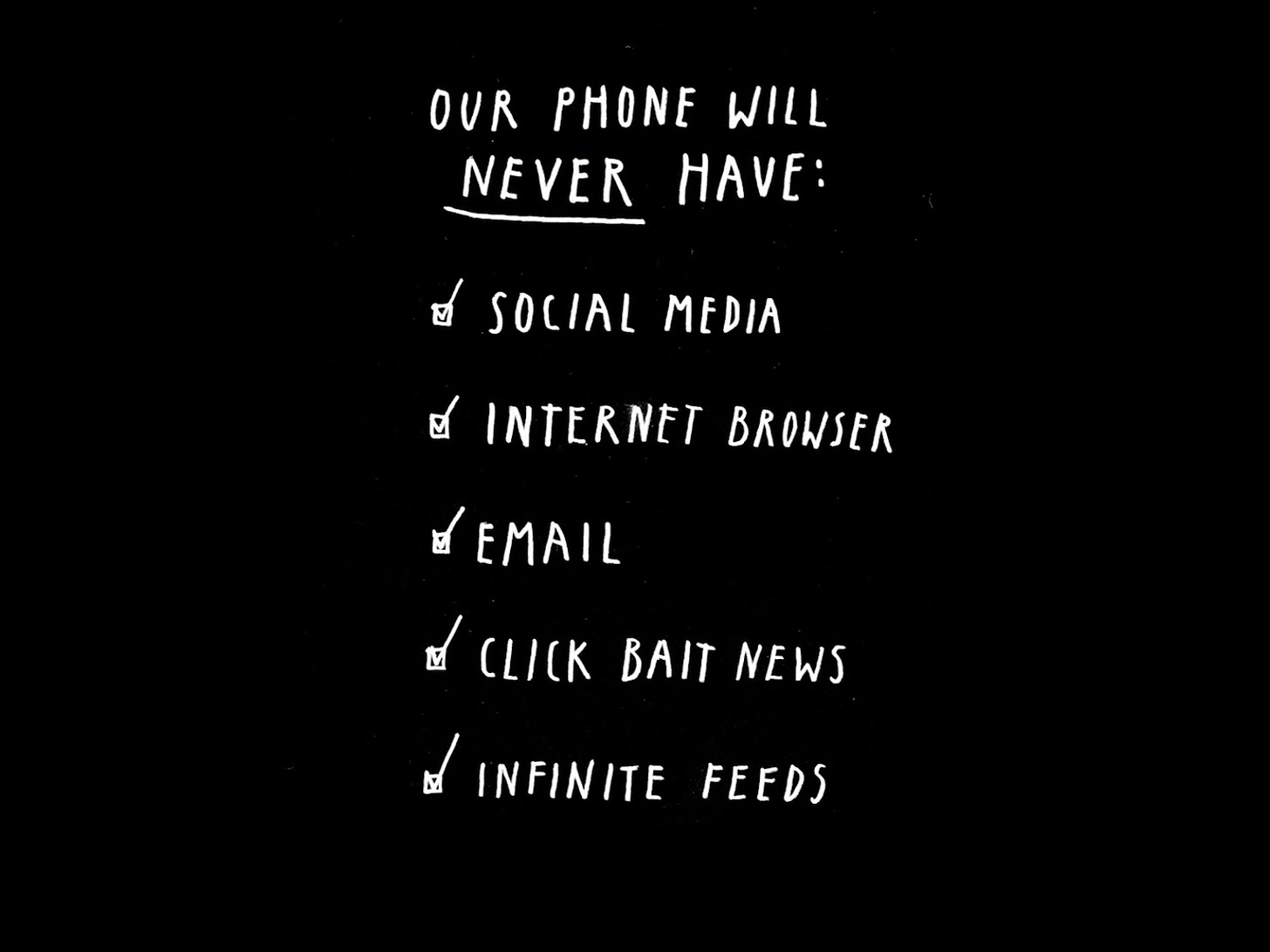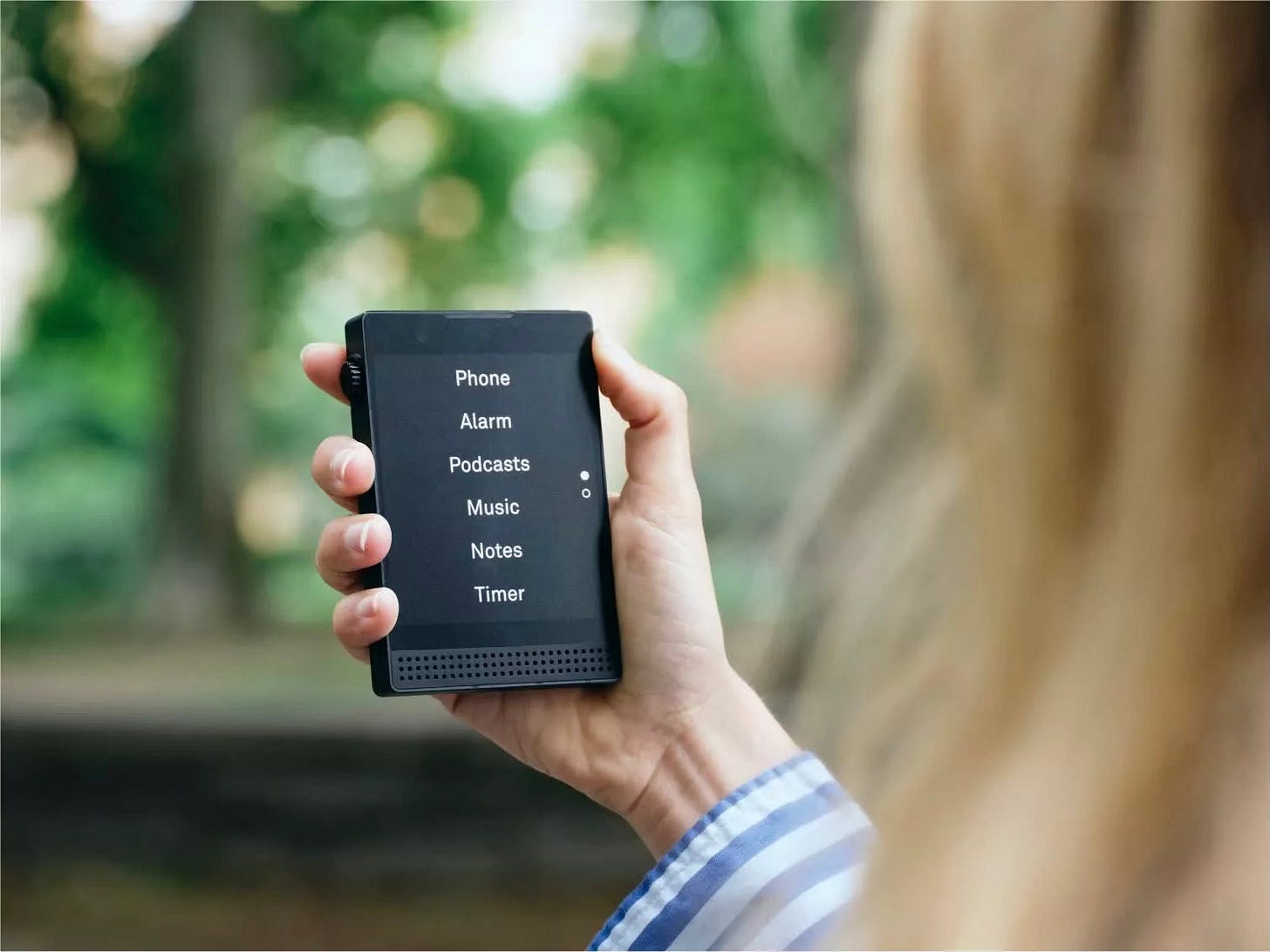I have only seen one Light Phone so far in my life, and it literally stopped me in my tracks. I was walking out the front door of a school in Indianapolis, where I’d just given a talk, and the host, a man named Bob, pulled one out of his pocket. I froze. “Wait! Is that a Light Phone?!” He graciously took a moment to show it to me. He said it’s been life-changing, and he loves it.
I was a bit envious of Bob’s phone. Though I’ve been following the Light company’s work for years, its phones have not been available in Canada. That is supposed to change this year, with the launch of the newest model, the Light Phone III, which will operate under the Telus network (sadly, still not in my rural region). But for many people who live elsewhere in the world, the Light Phone III is an amazing option for cutting the smartphone umbilical cord, while remaining sufficiently connected.
In light of the upcoming launch (pun absolutely intended), I reached out to company founders Joe Hollier and Kaiwei Tang to learn more. They’ve been in this business since 2014, first creating a credit card-sized device that only made calls and was limited to nine speed-dials. It was designed to be “a phone away from phone,” encouraging people to leave their smartphones at home and take a simpler, lighter device when they headed out.
Eventually, they realized people wanted a bit more versatility. They wanted enough basic tools, like an alarm clock, a map function, a way to listen to podcasts and music, that could allow them to ditch the smartphone altogether. That’s when the Light Phone II was born.
I asked Hollier and Tang what they’ve seen in terms of a cultural shift over the past decade, and how people’s curiosity and willingness to consider smartphone alternatives has changed. Joe wrote back, telling me in an email that, yes, “smartphone fatigue is very real,” especially coming out of the pandemic. It’s something that affects everyone, no matter their age or where they live.
We no longer really need to explain why someone might switch to a Light Phone, what the benefit might be for them. People seem to get that right away. Of course, there are still plenty of excuses for why potential users feel they cannot yet make the plunge to a simpler phone and more intentional relationship with the Internet at large; but [more are asking] ‘what if?’
Many users, he said, feel helplessly bound to smartphones for their work and social lives. Part of his work has been trying to show more diverse examples of how people can “go light” successfully. “[We] show examples of how it is possible, as a mom, student, freelancer, CEO, or artist, and to give [people] the inspiration and advice they might need to make the transition themselves.”
I asked what Light Phone users like most about their minimalist devices, and Joe said, “They love NOT using it much at all!” Unlike a smartphone, which is designed to hold your attention for as long as possible, the Light Phone is designed to be used as little as possible. People regain significant chunks of time, “often hours a day.” Joe went on:
There is a peace of mind that comes from not being constantly bombarded by an infinite stream of noise and distraction. Users describe getting their attention spans back, starting new hobbies, getting back into reading, and spending more quality time with their family and friends.
Another fun feature is how the device tends to spark curiosity. “Another thing we often hear about is the conversations that come up naturally around using the phone. A stranger asking, ‘What is that thing? Is that a phone?’ leads to much deeper conversations around our relationship to technology. It becomes a point of pride for many users.”
The upcoming Light Phone III builds further on the II, offering a metal frame, wider display, USB-C, fingerprint ID, a flashlight, 5G, an NFC chip, a clickable wheel, and a two-step shutter button camera. Both Light Phones II and III can be used a hotspot (if you have data on your phone plan), tethering another device, like a laptop or tablet, to the Internet, but the phone itself cannot be used to browse online.
It has been designed with repairability in mind; users will be able to swap out the battery easily, as well as replace the screen and USB port. The company takes issue with planned obsolescence, which Joe tells me is “the business model of intentionally crippling older models prematurely so that a company can upsell a new model each year.” By contrast, this company intends to support the Light Phone III for years to come (as it already has done with the II).

It is not a cheap device. Pre-ordering a Light Phone III still costs US $799 (though it’s currently available for US $599). I quizzed Joe on that, asking what it offers over other, cheaper “dumb” phones or basic talk-and-text phones. He had lots to say!
The Light Phone is not trying to compete with a cheap burner [many of which come with Internet browsers preinstalled], but serves as a true replacement to a smartphone. It’s a premium minimal device, taking the best of modern technology—the utility of maps, ability to hotspot, syncing your calendars, searching the directory—without bringing the vast amounts of distraction that plague the smartphone. We build the phone from scratch, using hardware to achieve a really special tailored design and software to ensure an intentional experience that protects user privacy.
Practically speaking, a significantly cheaper phone plan could offset the cost over time. But even more importantly, Joe said, “We see the Light Phone as an investment in oneself. We can’t help but ask, just what is your time worth?” That’s a valuable question for all of us to contemplate. A device that enables communication while giving us back our time and attention sounds like a dream come true.
Note: I have no affiliation with the Light company. This is not a sponsored post, nor did I receive any compensation for it. I am genuinely interested in the company and its products, which I’ve followed for years, and want to give my readers tools to unplug.
You Might Also Like:
Have You Read My Book?
Childhood Unplugged: Practical Advice to Get Kids Off Screens and Find Balance is available in paperback, PDF, or audiobook. If you love it, as many other readers have (it’s got a 4.9-star rating!), consider leaving a review on Amazon, which my publisher tells me is a huge help for boosting sales and visibility. If you’d like to learn more about my work, please check out my website.
A Small Reminder:
I am able to write this newsletter twice a week and keep it open to the general public, thanks to generous readers who enjoy my words enough to sign up for a paid subscription! It’s entirely a labour of love and it takes a LOT of time and effort to do. Paid subscribers are a sign that I’m on the right track.






Hey, it's Bob from Indianapolis! Several people from our school sent me your post this morning. The most important takeaway from that? That they are reading your substack! That's a win.
My wife was first to the Light Phone in our house, so credit where credit's due. We're both about two years in and see no reason to go back to a smartphone and every reason to stick with Light.
I love this! I ordered the Light Phone II at the beginning of the year and can't wait for it to arrive in May